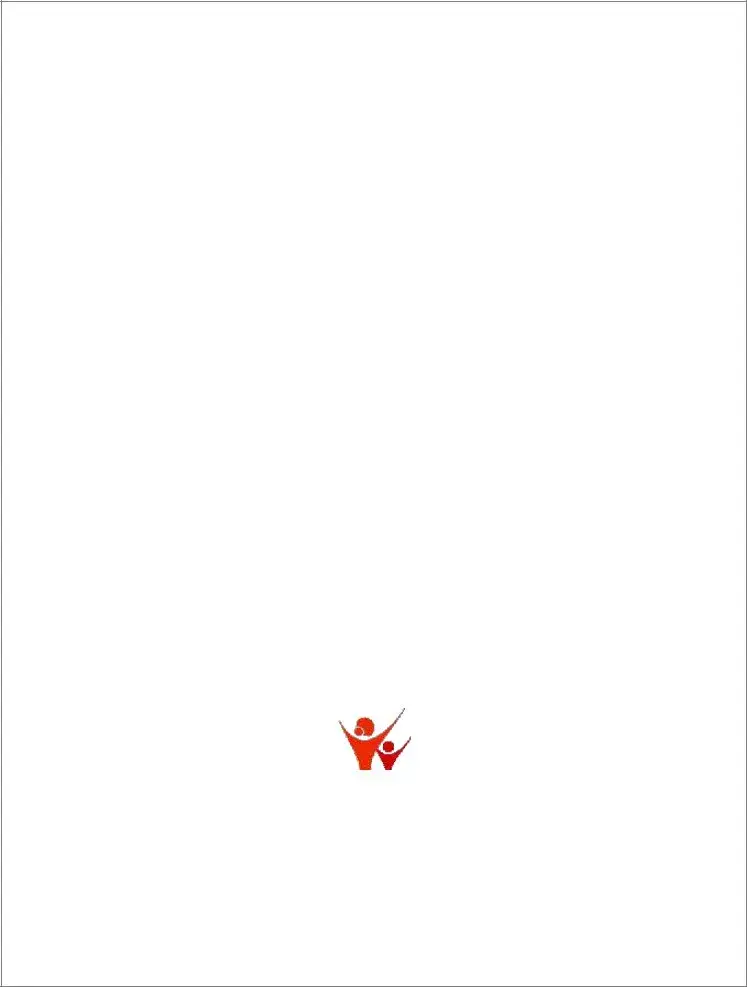The Igmsy registration form is a crucial first step for any business or organization looking to streamline their processes and access new opportunities. It's an important document that provides information about the business, its operations, and how it will manage its activities within the legal regulatory framework. This blog post will take you through all aspects of the Igmsy registration form, helping you understand what’s required for successful submission and approval. We'll cover details such as eligibility criteria, completion requirements and more so that you can move forward confidently with your application and maximize the benefit of registering with this respected platform!
| Question | Answer |
|---|---|
| Form Name | Igmsy Registration Form |
| Form Length | 62 pages |
| Fillable? | No |
| Fillable fields | 0 |
| Avg. time to fill out | 15 min 30 sec |
| Other names | apbs cr indira, इंदिरा गांधी मातृत्व सहयोग योजना ऑनलाइन रजिस्ट्रेशन, apbs cr indira full form, indira gandhi matrit tamil |

INDIRA GANDHI MATRITVA SAHYOG YOJANA
-A Conditional Maternity Benefit Scheme
IMPLEMENTATION GUIDELINES
FOR STATE GOVERNMENTS / UT ADMINISTRATIONS
TOWARDS A NEW DAWN
Ministry of Women and Child Development
Government of India
New Delhi
April, 2011

CONTENTS
Page No
1.Introduction……………………………………..…………………………………….. 3
2.Purpose of the implementation guidelines………..……………………………. 4
3.The Scheme ………………………………………….…………………………........
3.1 |
Objectives |
5 |
3.2 |
Target beneficiaries |
5 |
3.3 |
Districts covered under the Scheme |
6 |
3.4 |
Beneficiary registration |
6 |
3.5 |
Amount of payment and conditionality |
7 |
3.6 |
Incentive to the AWW and AWH |
10 |
3.7 |
Procedures for Payment |
10 |
3.8 |
Role of the AWW |
11 |
3.9 |
Flexi Funds |
11 |
3.10 |
Capacity Building and IEC activities |
11 |
3.11 |
Interdepartmental Convergence |
12 |
4Implementation modalities……………………………………………..…………….
4.1 |
Establishment of IGMSY section |
14 |
4.2 |
Steering and Monitoring committees |
15 |
5Fund flow and disbursement mechanism………………………………..…........ 16
6.Records, Reports, Monitoring and Evaluation………………………..…………. 17
7.Social audits and addressing grievances………………………………..…........ 19
Annex…..……………………………………………………………………………..……… |
||
A. |
List of Districts covered under IGMSY |
20 |
B. |
Means of verification of the conditionality to be used by AWW |
21 |
C. |
Modes of cash transfer to the |
22 |
D. |
Functions of IGMSY section, State and District Cells |
23 |
E. |
Suggestive composition of steering and monitoring committees |
25 |
F. |
Prototype of IGMSY register |
27 |
G. (i) - (iv) |
Monthly Progress Report of AWW, Supervisor, CDPO and DPO |
38 |
H. (i) - (ii) |
Format for Quarterly and Annual SoE including physical reports |
48 |
I. |
Budgetary norms under IGMSY |
60 |
Acronyms used…..…………………………………………………….…………..……... |
62 |
|
2

1INTRODUCTION
Undernutrition continues to adversely affect majority of women in India. In India, every third woman is undernourished and every second woman is anemic1. An undernourished mother almost inevitably gives birth to a low birth weight baby. When poor nutrition starts
Janani Suraksha Yojana (JSY) was launched in 2005 by Ministry of Health and Family Welfare. It provides a differential
In view of the above, the Ministry of Women and Child Development (MWCD) formulated a new Scheme for pregnant and lactating mothers called Indira Gandhi Matritva Sahyog Yojana (IGMSY) – a Conditional Maternity Benefit Scheme. Under this Scheme, a cash incentive of `4000 will be provided directly to women 19 years and above for the first two live births subject to the woman fulfilling specific conditions relating to maternal child health and nutrition. Cash incentive will be provided in three installments, between the second trimester of pregnancy till the infant completes 6 months of age. Women enrolled under IGMSY will be encouraged to avail JSY package also for institutional delivery and
IGMSY is a Centrally Sponsored Scheme under which full
1National Family Health
2Planning Commission. Eleventh Five Year Plan
3

PURPOSE OF THE IMPLEMENTATION
2 GUIDELINES
The purpose of these guidelines is to serve as a reference material with all necessary practical information on the components of IGMSY and how to implement, monitor and report it at various levels.
The target audience for these guidelines are the officers and functionaries of SGs/UTs beginning from State, District and Project level right up to the
These guidelines would be further supplemented by the GoI from time to time, as and when required.
4

3THE SCHEME
3.1 Objectives of IGMSY:
To improve the health and nutrition status of Pregnant and Lactating (P & L) women and their young infants by:
i.Promoting appropriate practices, care and service utilization during pregnancy, safe delivery and lactation.
ii.Encouraging women to follow (optimal) Infant and Young Child Feeding (IYCF) practices including early and exclusive breastfeeding for the first six months.
iii.Contributing to better enabling environment by providing cash incentives for improved health and nutrition to pregnant and lactating women.
Note: The Scheme aims to provide partial compensation for the wage loss so that the woman is not under compulsion to work till the last stage of pregnancy and can take adequate rest before and after delivery.
3.2 Target beneficiaries:
i.P & L women of 19 years of age and above for their first 2 live births.
Why 19 years of age and above? The legal age of marriage in India for women is 18 years and hence the age criterion for child birth has been taken as 19 years. This is to encourage marriage and child birth at the right age.
Why only first two live births? To ensure that the health of the woman is not compromised due to repeated pregnancies and to promote family planning.
ii.All Government/Public Sector Undertakings (Central and State) employees are excluded from the Scheme as they are entitled for paid maternity leave. The wives of such employees are also excluded from the Scheme.
iii.Age, number of live births and employment status would be as reported by the beneficiary. In case of wrongful claim by the beneficiary, the amount paid to her would be recovered. Failing which, she will be liable for prosecution. A signed undertaking to this effect, as at Annex F, Part II (A), will be necessarily taken from the beneficiary at the time of registration under the Scheme
iv.Pregnant and lactating AWWs and AWHs may also avail the benefit under the Scheme if they are not receiving paid maternity benefits from the Government.
5

3.3Districts covered under the Scheme:
i.IGMSY will be implemented in all projects and AWCs (including urban projects and mini AWCs) of 52 selected districts across the country (Annex A).
ii.The districts have been selected based on a composite score calculated using six indicators related to maternal and child health and nutrition from District Level Household
iii.These indicators included:
Literate female population (Age 7+) (%)
Mothers registered in the first trimester when they were pregnant with last live birth/still birth (%)
Mothers who had at least 3 antenatal care visits during the last pregnancy (%)
Institutional births (%)
Children
Children breastfed within one hour of birth (%)
iv.The districts were divided into three categories, based on their composite score - good, medium and poor performance. This categorization has been done to assess the implementation in all three types of sampled districts, lessons of which will be useful in
v.Out of 52 districts, 11 are good performance districts, 11 are poor performance districts, 26 are medium performance districts and 4 are UTs.
3.4 Beneficiary registration:
i.To avail the benefit, the woman has to register herself at the AWC for IGMSY.
ii.The baseline survey was carried out with the validation date of 01.12.2010. The women registered during the baseline survey would get the benefit of the Scheme during 2010- 11 on fulfilment of conditions. Any woman who becomes pregnant after the baseline survey shall also be included for the benefit under the Scheme, provided they register at the AWC.
iii.Every registered beneficiary under the IGMSY will receive a Mother and Child Protection (MCP) Card, either from the Anganwadi Worker (AWW) or the Auxillary Nurse Midwife
(ANM). The MCP Card will be used as a means of verification of the conditionalities for payment. Hence, AWW and ANM should ensure that the MCP card is provided to every beneficiary and required information is filled in this card, timely.
6

3.5 Amount of payment and conditionality:
i.The beneficiary will receive a total cash incentive of `4000 in three installments, subject to the fulfillment of specific conditions.
ii.Why three installments and why cash incentive of `4000 only?
The three installments and amounts have been worked out such that the beneficiary gets a reasonable amount every three months after 2nd trimester of pregnancy up to six months after delivery (including the JSY tranche).
This is a part wage loss compensation of approximately 40 days @ `100 per day, given as maternity benefit, for ensuring mother takes the much required rest before delivery and soon after delivery for taking better care of herself and her young infant.
3.5.1First Installment:
Amount: `1500. Given only at the end of the 2nd trimester of pregnancy i.e., completion of six months of pregnancy, on fulfilment of all the five conditions mentioned below:
i.Pregnancy registered within 4 months at the AWC or Health Centre
ii.Received at least one antenatal
iii.Received IFA tablets.
iv.Received at least one TT vaccination (out of optimal 2).
v.Received at least one counseling session at the AWC/ Village Health and Nutrition Day (VHND)/Home Visit.
3.5.2 Second Installment:
Amount: `1500. Given only at the end of three months of delivery on fulfilment of all the six conditions mentioned below:
i.Child birth is registered.
ii.Child has received Polio and BCG vaccination.
iii.Child has received Polio and
iv.Child has received Polio and
v.Child has been weighed at least two times after birth (out of optimal 4 times including weighing at birth).
vi.After delivery, mother has attended at least two IYCF counseling sessions at the AWC/VHND/Home Visit (out of optimal 3 times).
7

3.5.3 Third Installment:
Amount: `1000. Given only when the infant completes six months of age, on fulfilment of all the five conditions mentioned below:
i.Child has been exclusively breastfed for first six months, unless contraindicated by a medical doctor.
ii.Child has been introduced complementary foods on completion of age six months.
iii.Child has received Polio and
iv.Child has been weighed at least two times between age 3 and 6 months (out of optimal 3)
v.Mother has attended at least two IYCF counseling sessions between 3 and 6 months of lactation, at the AWC/VHND/Home Visit (out of optimal 3).
Note 1: Exclusive breastfeeding for the first six months means that for the first six months of life the infant receives only breast milk and nothing else (no food, drink or water) but allows the infant to receive ORS and vitamins/mineral/medicine as drops or syrup. Babies who are exclusively breastfed do not require additional food or fluid, herbal water, glucose water, fruit drinks or water during the first six months. Breast milk alone is adequate to meet the hydration requirements even under the extremely hot and dry summer conditions prevailing in the country3.
Note 2: Complementary foods are soft,
breast milk alone cannot meet the needs of the growing infant. The purpose of complementary feeding is to complement and not replace breast milk and make certain that the infant continues to have enough energy, protein and other nutrients to grow normally. It is important that breastfeeding is continued upto the age of two years or beyond as it provides useful amounts of energy, good quality protein and other nutrients3.
3.5.4 Special conditions:
i.If the beneficiary fulfils the conditions for the 1st installment, but undergoes a miscarriage she may be given the 1st installment upon producing proper documentation.
ii.In the first year of implementation (i.e., up to March 2011), the beneficiary can be enrolled at any stage of pregnancy or lactation. From
3National Guidelines on Infant and Young Child Feeding. Food and Nutrition Board, Ministry of Women and Child Development, Government of India; 2006.
8

iii.The beneficiary will be given the 1st installment only after the 2nd trimester is completed even if the beneficiary has fulfilled the conditions for the 1st installment earlier.
iv.If the beneficiary has a still birth, she will be eligible for the 2nd installment subject to attending 2 counseling sessions for her own health and well being.
v.If the beneficiary fulfills the conditions for the 2nd installment but the infant does not survive between birth and 3 months of age, she will be given the 2nd installment, upon producing proper documentation to ensure it was not a case of infanticide especially for the girl child.
vi.If the beneficiary on her first delivery gives birth to live twins she can avail the benefit of the Scheme only once (since the wage loss and rest required would be only once).
vii.If the beneficiary has one child and then in second delivery gives birth to twins she can avail the benefit of the Scheme for the second time (even though there are now 3 children).
viii.Beneficiary can receive the cash benefit of the Scheme only from the AWC where the beneficiary is registered. For example, if the woman is pregnant and has registered at one AWC and for her delivery she goes to her maternal village and receives some services, she can avail the cash benefit only from one AWC, that is the AWC where she has registered, on showing the filled up MCP card.
3.5.5Verification of the Conditionality: How, When and by Whom?
a)Verification by AWW: Means of verification of each conditionality to be used by AWW are (details at Annex B):
i.MCP card
ii.IGMSY register (Annex F)
iii.Growth monitoring register of ICDS
iv.Exclusive breastfeeding and initiation of complementary foods are to be
b)Verification by ICDS Supervisor:
i.During field monitoring visits, the ICDS supervisor should check the IGMSY register for correctness and verify the fulfillment of conditionalities through discussion with beneficiaries and checking their MCP cards.
ii.While receiving the Monthly Progress Report (MPR) from the AWW, the ICDS supervisor should check it for correctness.
9

3.5.6 IGMSY linkage with Janani Suraksha Yojana (JSY):
AWWs should encourage the IGMSY beneficiaries to avail the JSY package for institutional delivery. All delivery attendants should be sensitized to motivate mothers to initiate breastfeeding within an hour of birth, colostrum feeding and for exclusively breastfeeding their infant for the first six months.
3.6 Incentive to AWW and AWH:
i.AWW will receive a cash incentive of `200 per beneficiary after all the due cash transfers to the beneficiary are completed.
ii.AWH will receive a cash incentive of `100 per beneficiary after all the due cash transfers to the beneficiary are completed.
Note: Even if the beneficiary migrates in or out of the AWC area, the AWW and AWH would be entitled to the complete cash incentive amount if all due cash transfers to the beneficiary are completed. E.g., in some cases it might be the first two installments after which the beneficiary migrates out of the area, in other cases it might be that the beneficiary is eligible for the last two installments only, since as a result of migration she registered herself at the AWC for this Scheme after delivery.
3.7Procedures for Payment:
a)Payment to the beneficiary:
i.Transfer of amount to the beneficiary should be through bank/post office only.
ii.Modalities of cash transfer may be decided by the SGs/UTs. However, no disbursement would be in the form of “cash” or “cheque”.
iii.Modes of cash transfer can include - nationalized bank, post office, cooperative bank, business correspondent model of bank, etc. The mode used for M- NREGA, pensions, etc may also be explored. Some indicative examples are at
Annex C.
b)Payment to the AWW and AWH: All AWWs and AWHs have bank accounts in which their honorarium is credited. The incentive under IGMSY to the AWW and AWH should also be credited in the same account.
10